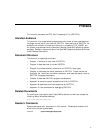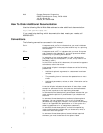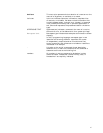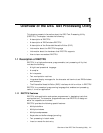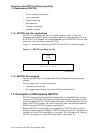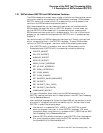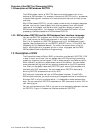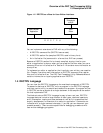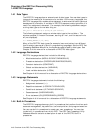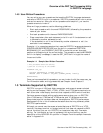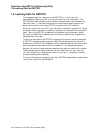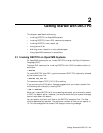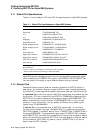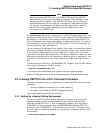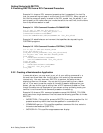
Overview of the DEC Text Processing Utility
1.3 Description of EVE
Figure 1–2 DECTPU as a Base for User-Written Interfaces
ZK−6544−GE
D E C T P U
Application
User−Written
Editor
EVE
to EVE
Extensions
User−Written
You can implement extensions to EVE with any of the following:
• A DECTPU command file (DECTPU source code)
• A DECTPU section file (compiled DECTPU code in binary form)
• An initialization file (commands in a format that EVE can process)
Because a DECTPU section file is already compiled, startup time for your
editor or application is shorter when you use a section file than when you use a
command file or an initialization file. Section 2.1.2 contains more information on
startup files.
To implement an editor or application that is entirely user written, use a section
file. Chapter 5 contains more information on DECTPU command files, section
files, and initialization files. The DEC Text Processing Utility Reference Manual
contains information on layering applications on DECTPU.
1.4 DECTPU Language
You can view the DECTPU language as the most basic component of DECTPU.
To access the features of DECTPU, write a program in the DECTPU language
and then use the utility to compile and execute the program. A program written
in DECTPU can be as simple as a single statement or as complex as the section
file that implements EVE.
The block-structured DECTPU language is easy to learn and use. DECTPU
language features include a large number of data types, relational operators,
error interception, looping and case statements, and built-in procedures that
simplify development or extension of an editor or application. Comments are
indicated with a single comment character ( ! ) so that you can document your
procedures easily. There are also capabilities for debugging procedures with
user-written debugging programs.
Overview of the DEC Text Processing Utility 1–5



